Reign 632 - 647 (15 years) Spouse Galmunwang Eum | Coronation 632 Father Jinpyeong of Silla Died 17 February 647 AD, Silla Successor Jindeok of Silla | |
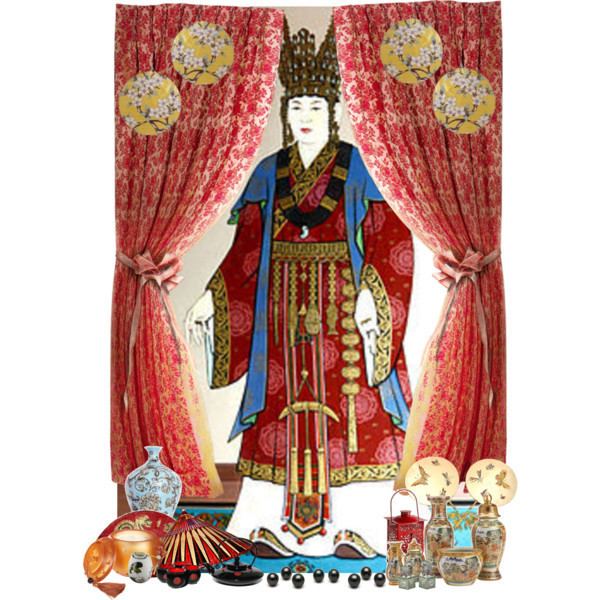 | ||
Parents Jinpyeong of Silla, Queen Maya of Silla Siblings Princess Cheonmyeong of Silla, Princess Seonhwa of Silla Similar Bidam, Mishil, Jinpyeong of Silla, Kim Yu‑sin, Muyeol of Silla | ||
Queen Seondeok of Silla (Hangul: 선덕여왕 [sʰʌndʌk jʌwaŋ]; ? - 17 February 647) reigned as Queen Regnant of Silla, one of the Three Kingdoms of Korea, from 632 to 647. She was Silla's twenty-seventh ruler, and its first reigning queen. She was the second female sovereign in recorded East Asian history and encouraged a renaissance in thought, literature, and the arts in Silla.
Contents
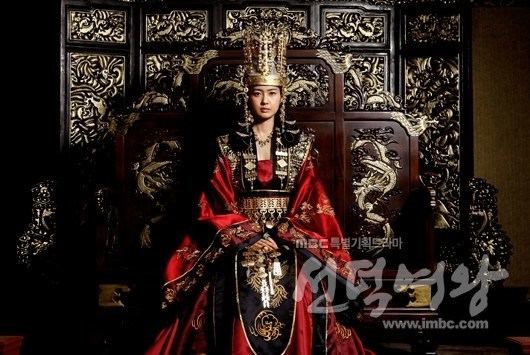
Selection as heiress
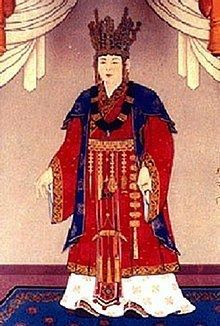
Before she became queen, Seondeok was known as Princess Deokman (hanja: 德曼 ). According to the Samguk Sagi, she was the first of Jinpyeong of Silla's daughters, but according to other historical records, she was the second of King Jinpyeong's daughters and much younger than her elder sister, Princess Cheonmyeong. Her nephew, Princess Cheonmyeong's son, eventually became King Muyeol of Silla while Seondeok's other sister, Princess Seonhwa, eventually married Mu of Baekje and became the mother of Uija of Baekje. Seonhwa's existence is controversial due to the discovery of evidence in 2009 that points to King Uija's mother as being Queen Sataek and not Seonhwa as indicated by historical records.
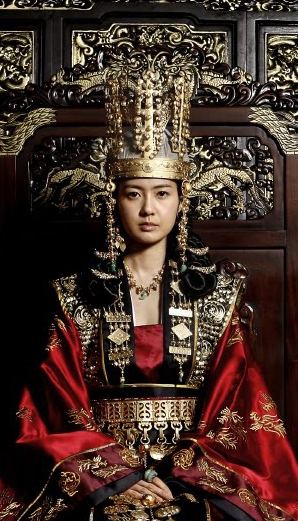
Because he had no sons, Jinpyeong selected Seondeok as his heir. Though unprecedented, this action would probably not have been all that shocking within Silla as women of the period already had a certain degree of influence as advisors, queens dowager and regents - Jinpyeong himself gained the throne as a result of a coup d'état organized by Mishil. Throughout the kingdom, women were the heads of families since matrilineal lines of inheritance existed alongside patrilineal ones. Within Silla, the status of women was relatively high, but there were still restrictions on female behavior and conduct; they were discouraged from activities considered unwomanly. Ultimately, Seondeok's successful reign in turn facilitated the acceptance of two more Queens regnant of Silla.
Reign
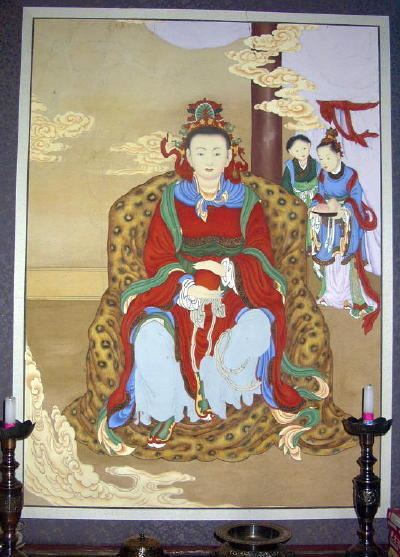
In 632, Seondeok became the sole ruler of Silla, and reigned until 647. She was the first of three female rulers of the kingdom (the other two being Jindeok of Silla and Jinseong of Silla), and was immediately succeeded by her cousin Jindeok, who ruled until 654.
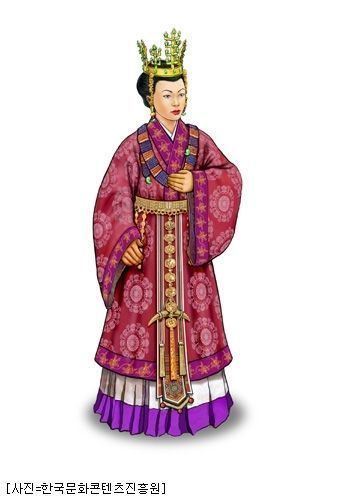
Seondeok's reign began in the midst of a violent rebellion and fighting in the neighboring kingdom of Baekje were often what preoccupied her. Yet, in her fourteen years as queen of Silla, she used her wit to her advantage. When Baekje invaded, she sought an alliance with Goguryeo. When Goguryeo also turned on Silla, she strengthened ties with Tang China. She kept the kingdom together and sent royal emissaries and scholars to China. She is also credited with the initial formulation of a Korean chivalric code and sent young Koreans to China for martial arts training.
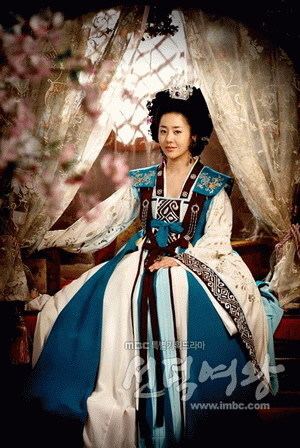
Like Empress Wu Zetian of the Tang and her own father, she was drawn to Buddhism and presided over the completion of Buddhist temples. Notable amongst Buddhist structures she had built is the nine-story wooden pagoda in Hwangnyongsa. On each story of the 80 meters high structure was the name inscribed of one of the neighbors Silla intended to subjugate. Bunhwangsa and Yeongmyosa were also built under her auspices.
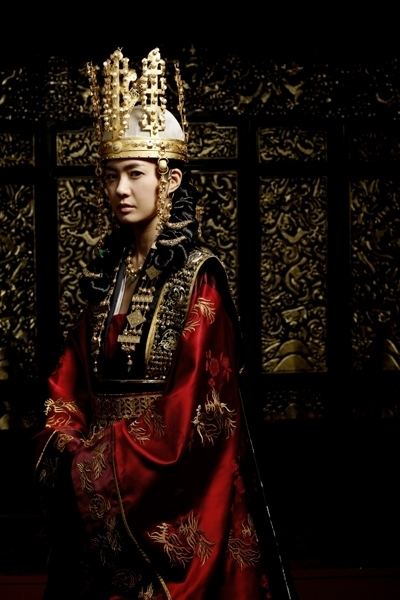
She built the "Star-Gazing Tower," or Cheomseongdae, considered the first dedicated observatory in the Far East. The tower still stands in the old Silla capital of Gyeongju, South Korea. She also worked towards relief of poverty.
In the first lunar month of 647, Bidam led a revolt with the slogan that "female rulers cannot rule the country” (女主不能善理). Samguk Sagi says that during Bidam's uprising, a star 'fell'. Bidam used it to encourage his followers, saying that it was a sign of the end of the Queen's reign. On the other hand, Kim Yushin advised the Queen to fly a burning kite to signal that 'the star is back in its place'. After that, Kim Yushin's army defeated Bidam's rebel faction. only ten days after Bidam's uprising, he and 30 of his men were executed by Queen Jindeok of Silla on 26 February (Queen Seondeok died on 17 February, Jindeok was then proclaimed Queen of Silla).
Legends
It is believed that Seondeok's selection as her father's successor was justified by her displays of precocious intelligence when she was a princess. One such story (both in Samguk Sagi and Samguk Yusa) recounts that her father received a box of peony seeds from the Emperor Taizong of Tang accompanied by a painting of what the flowers looked like. Looking at the picture, the young Seondeok remarked that while the flower was pretty it was a shame that it did not smell. "If it did, there would be butterflies and bees around the flower in the painting." Her observation about the peonies' lack of scent proved correct — just one of many illustrations of her intellect and hence of her ability to rule.
There are two other accounts of Seondeok's unusual ability to perceive events before their occurrence. In the first it is said that Seondeok once heard a horde of white frogs croaking by the Jade Gate pond in the winter. She interpreted this as an impending attack from the Kingdom of Baekje (the croaking frogs were seen as angry soldiers) in the northwest of Silla (white symbolized the west in astronomy) at the Women's Valley (the Jade Gate was associated with women). When she sent her generals to the Women's Valley, they were able to capture two thousand Baekje soldiers.
The second is an account of her death. Some days before she died, Seondeok gathered her officials and gave the order "When I die, bury me near the Dori-cheon (忉利天, "Heaven of Grieved Merits")." Decades after her death, the thirtieth king Munmu of Silla constructed Sacheonwang-sa (四天王寺 "Temple of the Four Heavenly Kings") in her tomb. Then the nobles realized that one of the Buddha's sayings, "Dori-cheon is above the Sacheonwang-cheon", was accomplished by the Queen.
Media
She was portrayed by actresses Lee Yo-won and Nam Ji-hyun in Queen Seondeok which aired on MBC in 2009, and by Park Joo-mi and Hong Eun-hee in The King's Dream (or Dream of the Emperor) which aired on KBS1 in 2012-2013.
Family
- Princess Cheonmyeong (天明公主 천명공주, dates unknown), 1st or 2nd daughter
- Princess Seonhwa (善化/花公主 선화공주, dates unknown), 3rd daughter (There is constant debate over her identity.)
- Kim Yongsu (金龍樹 김용수) 578-647, Princess Cheonmyeong's husband, 13th Pungwolju.
- Kim Chun-chu (金春秋 김춘추 604-661), only son, 18th Pungwolju; later King (Taejong) Muyeol (太宗武烈王 태종무열왕).
